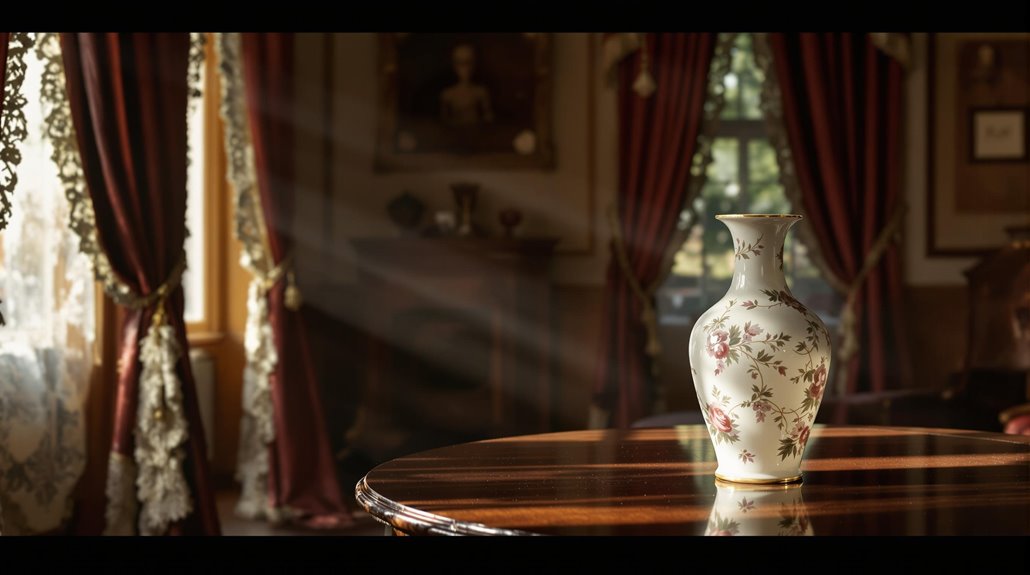Humans Are One of the Only Known Species That Blush
Have you ever wondered why your face turns red during an embarrassing moment? You're experiencing one of humanity's most unique traits – the ability to blush. While other animals can change their skin color for camouflage or mating displays, you're part of the only species that involuntarily flushes from social emotions. This distinct response has puzzled scientists and philosophers for centuries, and its evolutionary purpose reveals fascinating insights about human social development.
The Science Behind Our Rosy Cheeks

While many bodily responses can be controlled or faked, blushing stands out as a uniquely involuntary human reaction. When you experience embarrassment or self-consciousness, your body initiates a complex physiological response that you can't suppress.
During this process, adrenaline triggers your sympathetic nervous system, causing blood vessels in your cheeks to dilate. These vessels, which sit closer to your skin's surface, create that telltale redness that can spread to your neck, ears, and even upper chest. As noted by Charles Darwin, it is the most peculiar expression humans display.
Your brain's emotional triggers activate specific regions, particularly the cerebellum lobule V, leading to increased blood flow in these areas. Research has shown that blood flow increases only in the cheek being watched when someone is under observation.
What makes blushing fascinating is that it's tied to complex emotional triggers like shame and social anxiety. You can't consciously produce it, making it one of nature's most honest social signals.
Why Evolution Gave Us This Unique Trait
Why would evolution select for a trait that often disadvantages the individual? From an evolutionary psychology perspective, blushing serves an essential purpose in human society.
While it might seem counterintuitive, your ability to blush actually promotes social bonding and trust within groups. When you blush, you're sending an involuntary, honest signal that you acknowledge a social misstep. Charles Darwin himself described blushing as the most peculiar human expression. Research shows that blood flow increases specifically in areas of the face most visible to others during social interactions.
You can't fake it, and you can't stop it – making it one of the most reliable forms of non-verbal communication. This authenticity helps others forgive your transgressions more easily and view you less negatively.
Social Signals: What Your Blush Reveals
Beyond words and gestures, your blush broadcasts powerful social signals that others instinctively understand. When you blush, you're displaying emotional transparency that can work in your favor during social interactions. These blushing triggers, whether from embarrassment or even praise, show others that you're aware of social norms and care about their opinions. Unique to humans, this emotional expression sets us apart from all other species in nature.
Your involuntary red cheeks act as a silent apology when you've committed a social faux pas, helping to defuse tension and prevent hostile reactions from others. Studies suggest that individuals who experience easy embarrassment and blushing tend to demonstrate higher levels of altruistic behavior. People tend to view you more sympathetically when you blush after a mistake, as it demonstrates genuine recognition of your transgression.
This natural response strengthens social bonds and makes your emotional displays more credible, though in some cases, others might misinterpret your blushing as a sign of guilt.
Animal Kingdom: Our Blushing Stands Alone
Although many creatures display remarkable abilities, humans remain the only species known to blush from embarrassment. While some animal signaling involves facial coloration, like the bright red faces of bald uakari monkeys indicating their health status, these displays serve different purposes than human blushing.
You won't find other species experiencing the unique combination of physical and psychological elements that make up human blushing. When you blush, your blood vessels dilate in response to complex emotions involving self-awareness and understanding others' thoughts about you. The process is distinctly a mental response rather than being controlled by heart action.
This emotional expression sets humans apart from even our closest primate relatives. Though rhesus monkeys show some facial color changes, and uakaris redden from passion, none demonstrate the intricate connection between embarrassment and facial flushing that makes human blushing truly unique.
Cultural Perspectives on Facial Reddening

While facial redness carries universal biological importance, its interpretation varies dramatically across cultures. You'll find that Chinese participants show weaker preferences for facial redness compared to their Western counterparts, reflecting deeply rooted differences in cultural beauty standards.
These variations extend beyond simple color preferences – they shape how people perceive age, attractiveness, and social signals across different societies. East Asian observers consistently rate reddish skin brighter than yellowish skin tones. The way you interpret facial redness might depend heavily on your cultural background. In fact, studies involving 196 total participants have demonstrated clear cultural distinctions in how facial coloration affects attractiveness judgments.
Research shows that facial preferences vary considerably, with Chinese participants demonstrating stronger inclinations toward facial lightness. These cultural distinctions also influence how cosmetics are used worldwide, as different societies enhance facial contrast in unique ways to achieve their specific beauty ideals.
Understanding these cultural perspectives helps explain why blushing and facial coloration carry different social meanings globally.
Modern Research and Understanding Blush Response
Modern scientific advances have revolutionized our understanding of why humans blush, moving past cultural interpretations to explore the underlying mechanisms.
Recent research reveals that neural mechanisms in your brain, particularly the cerebellum and visual processing areas, become highly active during blushing episodes. When you blush, your sympathetic nervous system triggers facial blood vessels to dilate, causing the characteristic redness and warmth in your cheeks. This physiological response represents an honest emotional display that cannot be faked or controlled by the individual. Charles Darwin recognized blushing as the most human of all expressions.
Psychological theories suggest that blushing isn't just about feeling embarrassed in front of others.
The latest findings show it's more closely tied to self-awareness and exposure than previously thought. A 2024 study found that simply viewing yourself can trigger a stronger blush response than watching others, challenging traditional assumptions that blushing requires thinking about others' perceptions of you.










